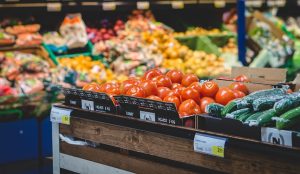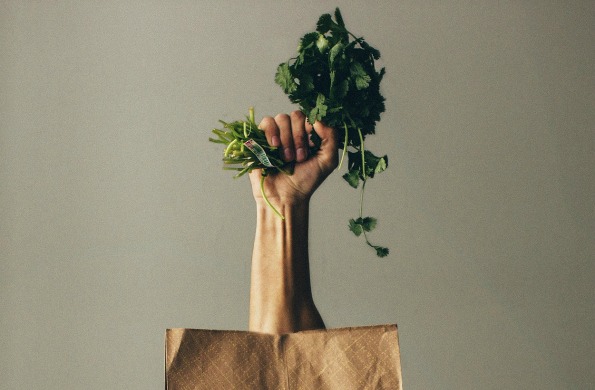So, in my last article I focused on the low fat/fat free myth and how you should eat natural, not man made fats if you want to improve your overall health. I also covered food coloring and the idea of going back to a simpler way of eating without so many prepackaged convenience foods that do little more than fill you up and overload your body with extra carbs, sugars, bad fats, preservatives and toxic food dyes.
I understand this hits families especially hard. When I was raising a young family I fell into the trap of quick and easy meals and snacks to make my life a little less hectic. This was especially tempting when my older girls began having activities outside of the house several days a week, and I began to feel like an underpaid taxi service.
 I didn’t feel that I had the time to fix meals from scratch, much less baking my own treats for hungry kids. But we paid for these quick fix dinners and snacks with my boys who developed various neurological and behavioral disorders that have effected their lives ever since they were young.
I didn’t feel that I had the time to fix meals from scratch, much less baking my own treats for hungry kids. But we paid for these quick fix dinners and snacks with my boys who developed various neurological and behavioral disorders that have effected their lives ever since they were young.
Having been a mother of an overly busy family of six children I understand only too well the allure of those packaged mashed potatoes, cans of ravioli, or the boxed cookies and crackers that kids love so much. But I also know the anguish of learning many years later that the problems that my boys are now living with may very likely have been exacerbated by, and possibly even have been caused by, those very foods that we were eating so that I could get through each day with a little bit less stress.
Of course the long term use of those pre-packaged convenience foods that I was using to help me save my sanity only served to make my life more complicated in the end. But how could I have known then that the excess of sugar, food coloring, flavor enhancing chemicals, bad fats, hybridized wheat, and those new highly praised GMO foods were over stimulating my children’s immune systems, and causing leaky gut, in addition to depriving their bodies of the very nutrients they needed for proper grow. The labels always made it sound like these were healthy foods and no one, including our doctors, ever warned me that any of this was going to cause a problem.
But the increase in inflammatory diseases and neurological disorders is shining a light on a situation that we as a society can no longer ignore.
 When I had my oldest son evaluated four years ago by a specialist in neurological disorders they ran a series of blood work where they discovered that not only was he highly sensitive to gluten and oats, he was also severely vitamin deficient and was tipping the scale for toxicity.
When I had my oldest son evaluated four years ago by a specialist in neurological disorders they ran a series of blood work where they discovered that not only was he highly sensitive to gluten and oats, he was also severely vitamin deficient and was tipping the scale for toxicity.
A few years later I had my younger son evaluated and discovered that he was also gluten sensitive and hypoglycemic in addition to having vitamin deficiencies.
It was clear we had to make changes, and we had to make them immediately.
First I think it is important to understand that sensitivity to gluten is not an allergy. It is a condition in your gut where gluten is not able to be digested properly, leaving the undigested food to stay in your intestines. This condition flattens out the micro-villi within your intestines which keeps you from absorbing all of the nutrients from your food and leaving a toxic mess behind. When this happens it irritates the wall of your gut lining leaving it unable to fully contain the waste products that would normally be filtered out, allowing toxins into your body where they don’t belong.
This leaky gut situation opens you up to a host of possible chronic conditions that range from fatigue, nutrient deficiencies, skin rashes, allergies, depression, neurological disorders, unexplained weight gain and more. If you remove gluten from the diet, and re balance the gut micro flora it will heal itself in time and a myriad of problems will eventually disappear.
So after getting our diagnosis the first thing I did was to take the gluten out of my son’s diet the best that I could. But this was a real struggle. He didn’t want to give up the foods he loved and was used to eating, and the transition was made even more difficult because most of the gluten free foods I could find at the time were not very appetizing.
 For example, the first brand of gluten free bread that I bought for him was like eating cardboard, and the gluten free pasta turned to a gloppy mess when I cooked it 1 minute longer than the box said to do it. It was a disaster and my son fought me every step of the way.
For example, the first brand of gluten free bread that I bought for him was like eating cardboard, and the gluten free pasta turned to a gloppy mess when I cooked it 1 minute longer than the box said to do it. It was a disaster and my son fought me every step of the way.
At the time I had a coworker who had Celiac Disease, and he was incredibly helpful in pointing me to the best choices of gluten free products that were on the market. There weren’t very many to choose from, and even fewer stores that carried them, but his assistance was invaluable in helping me through a difficult transition. The next loaf of bread was so much better thanks to this good man who was willing to help me learn the ropes.
Today, only a few short years later, there are many good choices out there. But it’s a double edged sword. There are more companies that are willing to put the money into the research and development of new gluten free foods that are more palatable than what was available in years past. But it has only come about because of the countless numbers of people who already have, or soon will find that they are gluten intolerant. There is big money now to be made in the gluten free market.
It’s a heavy price to pay thanks to the rapid change in the hybridization of wheat and the development of GMOs in this country, and our bodies inability to evolve fast enough to keep up with it. This is not a situation that will go away by itself. In fact I believe we are only beginning to see the sad results of what happens when man tampers with nature.
European countries like Italy, who use wheat that has not been altered, and places like India, that use a variety of ancient grains in their cooking, are not seeing the problems with gluten that we are experiencing in the United States.
Knowing what we are eating is more important today than ever. The big food companies do not have your families best interests at heart, and even many packaged gluten free foods are still junk foods in many ways. The only way you can be sure of what you are getting in your foods is to read the labels carefully in addition to buying more whole foods and preparing them yourself.

To read more of Denise’s articles, click here.
Many people are developing allergies and sensitivities to various foods, gluten being one of the worst offenders. But even if you don’t have a sensitivity to gluten, today’s wheat is so different from what humans were designed to digest that it wouldn’t hurt any of us to reduce our consumption of it.
If you don’t see the need to eat gluten free I would at least suggest buying Organic flour and making your baked goods yourself. This will minimize the issues with GMO crops that are heavy in toxins, and flours that have been bleached to make them more aesthetically pleasing.
However if you are interested in reducing the gluten load in your system, but still want to make your family yummy treats, I am including a gluten free Brownie recipe that my family loves. If you like brownies you will find that it is hard to keep this one on the shelf for long. In fact we always make a double batch so that they will last more than a couple of days.
Gluten Free Brownies
1 ½ Cups Organic Cane Sugar
½ Cup Butter
1 teaspoon gluten free vanilla extract
¾ Cup Organic Cocoa
3 Organic Eggs
¾ Cup Gluten Free Multi-Purpose Flour
1 teaspoon aluminum free Baking Powder
(You may use a gluten free flour mix where the Baking Powder is already in the mix if you prefer).
1 Cup Mini Organic Chocolate Chips
Coconut Oil for greasing the pan
Place sugar and butter in a small saucepan on med/low heat and stir occasionally until butter is melted and sugar is completely dissolved. Pour mixture into a large bowl.
Gently whisk your vanilla and cocoa into this mixture, then add the eggs and blend until shiny
Fold in your flour mix (and baking powder if needed)
Finally stir in the chocolate chips
Use Coconut Oil to grease a 9” by 9” pan. Pour into the pan and bake at 350 degrees for 35 to 40 minutes or until the top is set. Use a wooden pick inserted into the center. If it comes out clean your brownies are done.
Remove from oven and let cool on a wire rack for about 15 minutes. Cut before they are completely cool then store in a container with a tight fitting lid.
Resources:
http://www.healthy-holistic-living.com/gluten-intolerance-just-fad-todays-wheat-really-toxic.html
https://www.glutenfreesociety.org/leaky-gut-syndrome-is-gluten-at-the-root/
About Denise Mastrocola
Denise is a Michigander turned Pennsylvanian, who has been writing stories since Elementary School. Denise won an award at the annual Lansing Youth Talent Show, when she was in 10th grade, for a short story entitled Procrastination is Fatal, but didn’t decide on writing as a career until she was 28 years old. While homeschooling her older children she spent 4 years working through a course from The Institute of Children’s Literature.
Through the years Denise’s children have had a variety of health issues, many of which have been linked to various sensitives; having spent more than 20 years researching and trying different things Denise has a boots on the ground view on healthier living.
Denise currently writes for 2 blogs and has several books in different stages of completion. She is planning to break ground in e publishing, and hopes to have her first Historical Fantasy book which is set during the renaissance, “Lisa, My Lisa?” ready by the first of the year.
Twitter •






